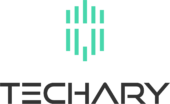The Different Components of an SME Managed Service Offering Explained

The Different Components of an SME Managed Service Offering Explained
“IT support”, “Managed services”, “Tech support” – all three describe the same concept: managing and supporting the technology infrastructure that powers an organisation.
At a high-level this sounds simple enough, but when we break down the components, you’ll find that there’s a lot that goes into delivering a competent IT support solution for customers.
These different components can be confusing and hard to distinguish between. Typically, SMEs can be quite confused about what they do and don’t need and are reluctant to challenge or question their provider.
At Techary, we believe in transparency and helping clients to really understand the complexity of their infrastructure, therefore we’ve built a service model that gives customers a clear view on the different services available to them.
Below I’ll discuss these offerings in more detail.
1. Remote End-user Support
Remote end-user support is the foundation of most SME client offerings. This generally covers the support of end-user devices used by staff on a daily basis, such as laptops and desktops.
The primary function of remote user support is to help staff stay productive. Common issues might include: operating systems issues or configurations, application maintenance or “how to” issues.
There are two types of remote support that we offer at Techary, based upon the customer requirements we’ve experienced over the past ten years.
a) Shared Support
Shared support is generally the option of choice for SMEs (1-300 users). This gives all users within the org access to a shared resource pool of experienced technical professionals to solve day-to-day issues, which would otherwise involve significant direct expense. The resources are shared across several customers, with committed response times governed by outlined SLAs.
b) Dedicated Support
Our dedicated support offering is suitable for those with more specific requirements. Engineers are deployed (often at the customer site) to provide a more personalised service offering, utilising Techary’s existing structure, tooling and management capability to deliver a robust support service.
2. Network Support
It’s all well and good having your end user devices covered for issues, but what about your more complex network infrastructure (servers, switches, firewalls and access points)?
These are the areas we find that most SMEs tend to overlook or struggle to understand. Network devices are considered the backbone of the infrastructure, and without them, the endpoints would fail to connect to the central network.
Some examples:
- Connecting to the Wi-Fi
- Switches to distribute connections to devices
- Firewalls to connect to the Internet and provide a security layer from public connections
Network support includes the monitoring and remediation of network infrastructure/devices such as servers and switches.
What it covers:
- Firewall configuration changes
- Switch configuration changes
- Network running slow/speed issues
- Server high CPU utilisation
- WiFi coverage issues
- WiFi/Network connection drops
3. Security Support
Security has become increasingly important in business over the last 10 years, with cyber threats constantly evolving and developing. As such, security should be at the forefront of technology plans.
Purchasing an anti-virus, anti-malware or software solution is no longer enough.
How do you act on logs? Review alerts? Handle an incident?
Software alone is not the answer to a secure organisation. Sure – it’s a useful first line of defence, but businesses need to consider how they manage and act on the alerts that such systems produce.
Security support typically includes monitoring and threat remediation of end user devices, servers, emails and DNS filtering.
We partner with industry-leading vendors such as Sentinel One and Barracuda to support these different areas.
What we cover:
- Malware attacks
- Device viruses
- Blacklisting & white listing email address/email domains
- Managing blocked email queues
- Analysing inbound and outbound emails
- Blocking customers from browsing illegitimate websites such as gambling etc.
Why the Different Types of Support?
Different technical issues require different levels of technical expertise. Some will be a lot simpler to resolve than others, so ensuring the fastest route for escalation will ultimately result in less downtime for your end users. The quicker you can pinpoint the issue and which type of support this falls under, the quicker it can be resolved.
Knowing the difference between the different types of support gives you a clear view of the services you take and what each one entails. This also makes it easier to understand what you are missing from your technology stack and where you might need to develop.
For more information or to start your technology support journey with us today, please don’t hesitate to contact us.
—
You can connect with Michael on LinkedIn here.


